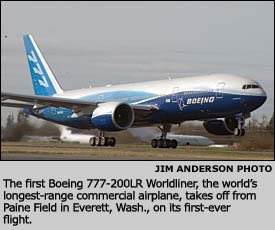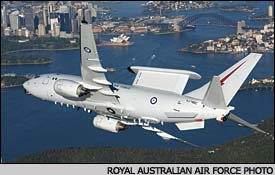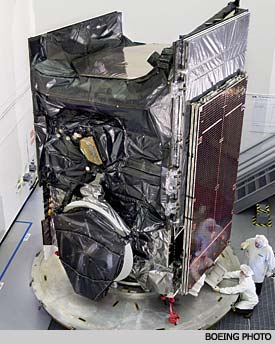| Boeing gets
OK to bid on USAF launches
Last month's reinstatement of Boeing's expendable launch business by
the U.S. Air Force means the company can compete again for government
launch contracts.
The Air Force lifted the 20-month suspension after determining the company
could demonstrate that enhanced internal controls had been put into place.
The suspension had stemmed from the Air Force's inquiry into Boeing's
handling of an incident involving Boeing employees who possessed another
company's documents relating to the Evolved Expendable Launch Vehicle
program.
The announcement reinstating Boeing was made by then-Acting Air Force
Secretary Peter Teets during a Pentagon news conference. "Over the
past 20 months, Boeing has taken serious corrective actions," Teets
told reporters.
Concurrently, the Air Force and Boeing entered into an interim administrative
agreement that requires Boeing to continue to maintain improvements to
its ethics and compliance programs that it adopted as a result of internal
initiatives and the recommendations of four independent reviews.
The external reviews, two led by former U.S. Sen. Warren Rudman, recommended
improvements in five categories:
- Management involvement
- Hiring and employment practices
- Procurement integrity
- Employee training
- Investigation procedures
The agreement states that Boeing will address the recommendations from
the external reviews and ensure that Boeing processes and procedures
are implemented consistently throughout the company. Additionally, the
agreement requires that Boeing hire a Special Compliance Officer to serve
as an independent monitor of the company's compliance with the agreement.
The SCO is colocated with the Office of Internal Governance, the organization
responsible for the internal monitoring of the company's compliance.
The agreement will be in place for at least three years.
"We have worked hard over the past 20 months to restore the trust
and confidence of our customer, and we are grateful that we have reached
this point. The company is committed to maintaining the highest standards
of ethical business conduct at every level of the organization," Boeing
said in a statement.
Getting fit to fly

The 777-200LR Worldliner, the world's longest-range commercial
airplane, completed its first flight last month and began a test
program that will lead to its first delivery in January 2006. During
this inaugural three-hour flight, the airplane climbed to an altitude
of 15,000 feet (4,572 meters) and an air speed of 270 knots, or
about 310 miles (500 kilometers) per hour, customary on a first
flight.
What does it take to prepare the world's longest-range commercial
airplane to fly? Find out by visiting http://www.boeing.com/commercial/
777family/200LR/videos.html on the World Wide Web and see how employees
worked together during preflight testing activities and other events leading
up to the Boeing 777-200LR Worldliner's first flight.
|
Wedgetail visits
Australia

A 737 Airborne Early Warning and Control aircraft for Australia's
Project Wedgetail flew over Sydney harbor last month during the
aircraft's first trip to Australia. The aircraft was displayed
at the Australian International Airshow 2005 and stopped off in
Canberra, the nation's capital city. It also visited Royal Australian
Air Force bases Williamtown, Amberley and Edinburgh, where hundreds
of employees support the Boeing-led Wedgetail team. Six Wedgetail
AEW&C aircraft have been purchased. Delivery of the first two
is scheduled for November 2006. |
Set for space
Teammates at Boeing's Satellite Development Center complex in
El Segundo, Calif., have been preparing two spacecraft set to launch
within the next few weeks.
The Spaceway F1 satellite (above) for The DIRECTV Group Inc. arrived
at the Sea Launch home port in Long Beach, Calif., where it will
undergo final preparations for a late April launch aboard a Zenit-3SL
vehicle. A Boeing 702 model satellite, Spaceway F1 is the first
of two spacecraft scheduled for launch this year for DIRECTV and
the most complex commercial satellite system ever manufactured.
Spaceway F1 is one of four Boeing-built Ka-band satellites DIRECTV
has scheduled for launch over the next three years as part of its
plan to expand programming capacity.
Meanwhile, the first of three next-generation Geostationary Operational
Environmental Satellites was shipped to Kennedy Space Center, Fla.,
for a scheduled May launch. Boeing is manufacturing these spacecraft
for the National Oceanic and Atmospheric Administration and NASA.
The satellite will provide more accurate prediction and tracking
of severe storms and other weather phenomena, resulting in earlier
and more precise warnings to the public. The Boeing-built 601 model
satellite will be launched onboard a Boeing-built Delta IV Medium+
configuration rocket.
|
|

